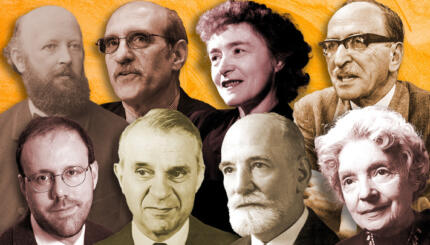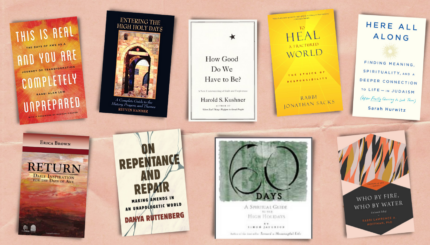Portnoy ‘s Complaint is the most notorious, talked-about novel in the American Jewish tradition; it also happens to be one of the finest. Though Roth has spent more energy developing the character of Nathan Zuckerman, and in recent years has written exceptional novels starring none other than Philip Roth, it seems clear that 100 or 200 years from now, the author will be remembered as the creator of Alexander Portnoy-sex-crazed, often impotent, obsessed with the slings and arrows of his Jewish family.
Portnoy tells the story of his life in a hilarious rant, wheeling through the events of his childhood and adult life with a stand-up comic’s sense for incident and a postmodernist’s eye for subtle underlying patterns. Having barely survived his early years with a stereotypical Jewish mother-straight out of Dan Greenburg’s nonfiction bestseller, How to Be a Jewish Mother (1964)-and a perpetually constipated father, the young Portnoy soon discovers his first love, masturbation, which he practices with a ferocious intensity rarely matched by anyone, except perhaps just about every teenage boy on the planet. “My wang was all I really had that I could call my own,” he explains.

His second object of fascination, shikses (that is, non-Jewish girls), carries him well into his 20s. He applies a nickname to each of his non-Jewish girlfriends: there’s the Pumpkin, the Pilgrim, and finally the Monkey, who matches his nymphomanic lusts but can’t spell (she leaves a note for the maid asking her to “polish the flor by bathrum pleze & don’t furget the insies of windose “). By the end of the novel, Portnoy has landed in post-1967 Israel, where he finds himself as out of place and neurotic as ever.

Help us keep Jewish knowledge accessible to millions of people around the world.
Your donation to My Jewish Learning fuels endless journeys of Jewish discovery. With your help, My Jewish Learning can continue to provide nonstop opportunities for learning, connection and growth.
The book then shudders to a stop with an unforgettable “PUNCH LINE,” spoken by Portnoy’s Freudian analyst: “Now vee may perhaps to begin. Yes?” Sensibly enough, many readers have found the attitude toward women in Portnoy’s Complaint repulsive; a smaller number have also objected to the book as an unsavory portrait of the modern American Jew. At the same time, many serious readers-both male and female-have found it not only a riotously comic emblem of late 1960s culture, but also a lasting work of art with something important to say about American Jewish life. One could argue that all the sex in the novel is highly traditional, though expressed in an X-rated vocabulary that became available only in the mid-1960s, thanks to a series of anti-censorship court decisions.
Critics like Leslie Fiedler have suggested that telling stories about who sleeps with whom and who marries whom has been one of the major ways Jewish writing has approached questions of Jewish nationhood, identity, and continuity, starting as far back as the itself. In this light, Portnoy’s lusts and impotence can be read as Roth’s explorations of a potential diasporic Jewish identity in the face of Israeli machismo and the temptations of assimilation. That is one reading, at least-the wonder of this novel is that you can read it and reread it, and each time you’ll laugh out loud again and emerge with a different response to its brilliant provocations.
Further reading: Roth’s novel was adapted into an unremarkable film in 1972. A controversial blockbuster like Portnoy was bound also to inspire imitations and ripostes, which include Gail Parent’s Sheila Levine Is Dead and Living in New York (1972) and Barbara Bartlett’s The Shiksa (1982). The novel figures prominently in the historian David Biale’s wide-ranging cultural history, Eros and the Jews (1992).


